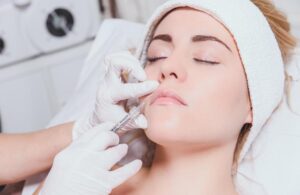Since the early- to mid-nineties, there has been a steady increase in the amount of plastic surgery procedures performed in this nation. In fact, there was a combined total of nearly 15 million minimally-invasive and conventional cosmetic enhancement procedures in 2012. The trend in plastic surgery doesn’t show any signs of losing steam in the near future, but the focus of our cosmetic “tune-ups” has demonstrated a noticeable shift from our bodies to our faces.
The most popular cosmetic treatments were formerly the ones focused on giving patients a more sultry figure. Surgeries were focused on bigger and rounder, with procedures like breast augmentation and buttock implants (figuratively) exploding to help women look like their most buxom celebrity idols. But now, time is finally catching up to those patients who so eagerly jumped to cosmetic enhancement in the field’s infancy; rather than looking for an exaggerated physical appearance, people are now looking to plastic surgery from a much more pragmatic angle.
While the entire field of cosmetic surgery has steadily garnered more and more attention, new procedures – and even conventional, more practical procedures – are gaining popularity among baby boomers seeking to maintain their youthful glow for just a bit longer. This hypothesis is best supported by the extraordinary boom in the amount of injectable treatments – particularly Botox – that has been performed over the past few years: in 2012, there were over 6 million Botox treatments administered by cosmetic surgery professionals. The injectable treatment, sought for its ability to give the brow region a smoother, more relaxed look, is one of the easiest ways for people to (ostensibly) shave a few years off of their age. Sought by men and women, alike, Botox illustrates a transition from bodily enhancement to facial preservation in the field of aesthetic medicine.
Additionally, eyelid surgeries and facelifts (which had seen a decline since they began) have had small bursts in interest over the past year. Again, when people are realizing that injectable treatments can’t provide a satisfactory solution to facial aging, they begin looking to the hand of a skilled surgeon to tighten rather than to augment. Below are a few more surgeries that have experienced a noticeable increase or decline over the past year.
Increase:
- Blepharoplasty (eyelid surgery): 204,015 up from 196,286 in 2011
- Facelift: 126,320 up from 119,026
- Botox: 6,134,621 up from 5,670,788
- Soft Tissue Fillers: 1,988,767 up from 1,891,158
Decrease:
- Breast Augmentation: 286,274 down from 307,180
- Buttock Implants: 858 down from 1,149
- Buttock Lift: 2,898 down from 4,546
- Tummy Tuck: 106,628 down from 115,902
While some of these shifts are small, they are still consistent across the board of related surgeries. Facelifts, as mentioned before, had experienced a pretty consistent decline until recently. Breast Augmentation, on the other hand, had increased nearly 50% from 2000 to 2011, and suddenly loses 21,000 procedures in a single year. Even procedures that are included in the Mommy Makeover have all declined, suggesting that new moms might be more concerned with the wrinkles from stress than with their pregnancy weight. The field of cosmetic surgery is inherently capricious, and highly impacted by (pop) cultural factors, but it is interesting to consider that we might be witnessing the first serious change in our country’s corporate body image since the beginning of plastic surgery.


